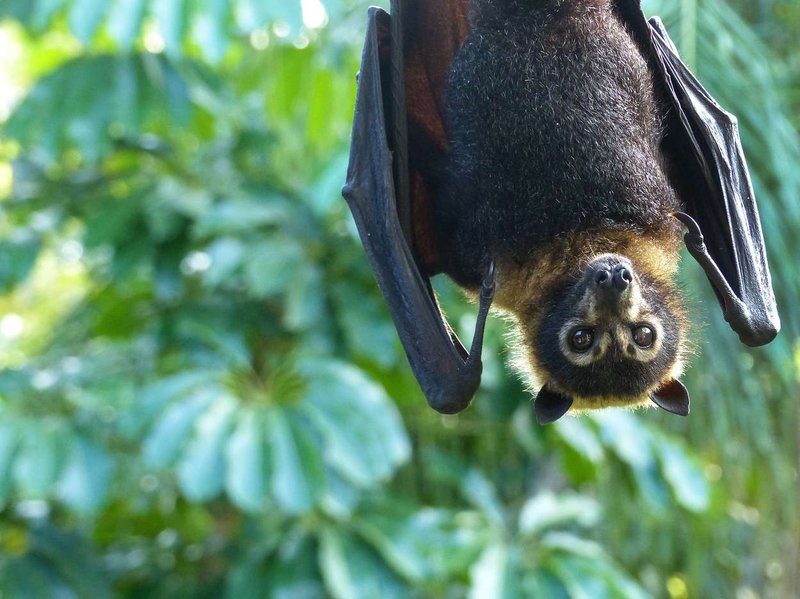
Just like we humans adapt to our surroundings, bats have developed unique skills to survive in harsh climates. They’re not just hanging around in dark caves or old barns; they’re busy playing crucial roles in our ecosystems. When we look closer, we see that their survival strategies are truly remarkable. So, grab a comfy chair, and let’s dive into the world of bats and explore how they manage to live in such challenging conditions!
Unique Adaptations for Survival
Bats are masters of adaptation, and that’s one of the keys to their survival. They come equipped with some pretty cool features that help them thrive in various environments. For instance, their echolocation ability allows them to navigate and hunt in total darkness. Imagine sending out little sonar pings and listening for echoes to find your way around. It’s like having a super-powered GPS system!
Not only do bats use echolocation for navigation, but they also rely on it for finding food. They can locate insects, fruits, or even nectar in complete darkness. This ability becomes even more crucial in harsh environments where food might not be abundant. Some bats can detect a tiny moth flapping its wings from a distance of over a hundred feet. That’s impressive, right?
Another fascinating aspect is how bats have different physical adaptations. For example, some species have longer wings, making them excellent gliders, while others are smaller and have short wings, which makes them agile flyers. Each type of bat has evolved to fit perfectly into its environment, allowing them to chase food or escape predators effectively.
Temperature Regulation: Staying Warm or Cool
Bats are warm-blooded creatures, which means they maintain a constant body temperature, just like us. But here’s the catch: when the temperatures drop, or summers get too hot, they need to find ways to adapt. One of their tricks is hibernation, which lets them conserve energy when food is scarce.
During hibernation, bats find a cozy spot, like a cave, and enter a state of dormancy. Their body temperature drops, and their heart rate slows down significantly, allowing them to survive on stored energy. This strategy is especially important in colder regions where food isn’t available during winter. Let me explain how this affects their survival: by hibernating, bats can make it through tough winters and emerge when the weather is more hospitable.
On the other hand, some bats live in extremely hot environments. For these species, staying cool is a priority. Certain bats will roost in caves, under rocks, or in tree hollows during the hottest parts of the day. This behavior helps them avoid the scorching sun and allows them to conserve moisture. Interestingly, they are also known to engage in panting—like how dogs cool themselves down—to regulate their body temperature.
Food Sources: What Do Bats Eat?
You might be surprised to learn that bats have a diverse diet! Some are insectivores, munching on flying insects like moths and beetles, while others are frugivores, feasting on fruits, and some even sip nectar from flowers. This variety in diet plays a significant role in how bats survive in harsh environments.
In areas where insects are plentiful, insectivorous bats thrive, using their echolocation to hunt effectively. They can consume up to a thousand insects in a single night—talk about an all-you-can-eat buffet! However, what happens in a drought or a region with fewer insects? This is where those bat species that eat fruit come into play. By relying on fruits, they can adapt to changes in food availability while still ensuring they get enough nutrients.
Moreover, some bats, like the nectar-feeding bats, play a key role in pollinating plants. They visit flowers to drink nectar, and as they do so, they transfer pollen, helping plants reproduce. This symbiotic relationship is vital, especially in ecosystems needing diversity and resilience.
Living in Communities: Social Behavior
Bats are often social creatures, forming colonies that can range from a few dozen to millions of individuals. Living in large groups offers several survival benefits, especially in harsh environments. For starters, it provides protection against predators. Imagine trying to hunt a small, agile bat only to be overwhelmed by a huge group of them getting away together. It’s much harder to pick off one bat in a crowd!
Social behavior also plays into their feeding strategies. Bats often share information about food sources, which can be beneficial during lean times when every meal counts. In a way, they can be seen as a community of survivalists, each contributing to the overall well-being of the group.
Interestingly, some species exhibit behaviors similar to human social structures, like grooming and cuddling up together for warmth. This social bonding helps maintain their body temperature and strengthens their community ties. When you think about it, these social interactions are crucial for survival in the wild.
Threats and How Bats Cope
Even with all their amazing adaptations, bats face numerous threats in their harsh environments. Habitat loss, climate change, and diseases like White-nose Syndrome have seriously impacted their populations. It’s a tough world out there, and bats are facing challenges that can hinder their survival.
One way bats cope with these threats is through migration. Some bat species will travel long distances in search of more suitable habitats or better food sources. This type of behavior helps them avoid areas that become inhospitable due to changing climate conditions or human encroachment. Migration is critical to their survival, allowing them to escape unfavorable situations.
Additionally, conservation efforts are essential in helping bat populations recover. By protecting their habitats and raising awareness about their ecological importance, people can play a role in ensuring bats continue to thrive. Every little bit helps, from creating bat-friendly spaces to supporting local conservation initiatives.
Bats are extraordinary survivors, equipped with a unique set of adaptations that allow them to flourish in some of the most challenging environments. From their incredible echolocation abilities to their social behavior and community living, they prove time and time again just how resilient they can be. Although they face numerous threats, bats continue to find innovative solutions to cope with changing conditions.
As we learn more about these fascinating creatures, it becomes clear that bats play a crucial role in our ecosystems. Their survival not only ensures their own existence but also benefits the environment around them. So, the next time you see a bat swooping through the night sky, remember how remarkable their journey truly is!

